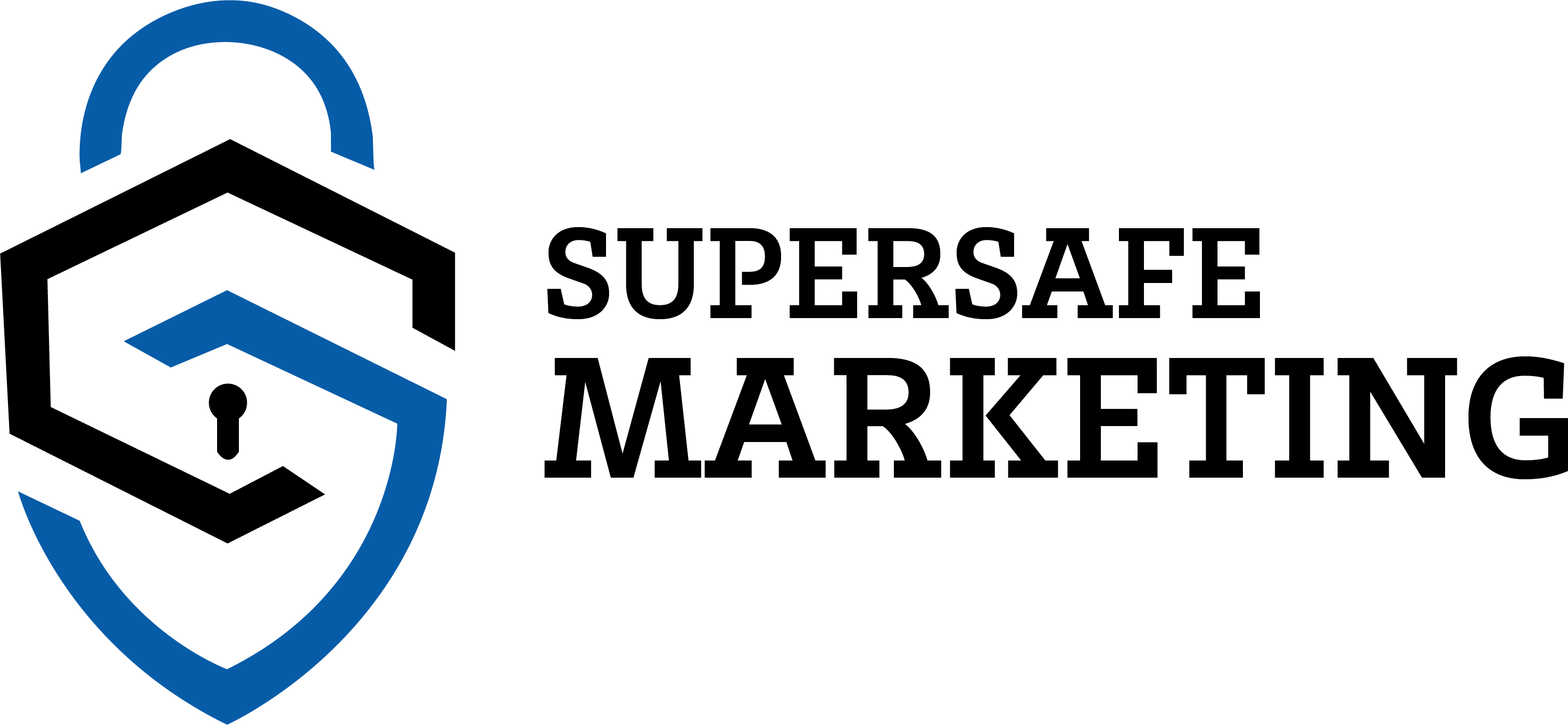The Importance of Brand Identity in Marketing: Why It Matters for Your Business
As a business owner, you understand the importance of making a good impression on your customers. Needless to say, successfully branding identity in marketing is one of the most critical components of that impression. A strong brand identity can help you stand out from the competition, build customer loyalty, and increase the perceived value of your products or services. Having a strong brand identity is crucial for businesses looking to succeed in today’s competitive market. Your brand identity is more than just your logo or company name, it is a representation of your company’s values, mission, and personality. In this blog post, we’ll explore why brand identity is so important in marketing and how you can create a strong brand identity for your business. Or, you could just let us do the hard work.
What is Brand Identity?
Your brand identity is the visual representation of your brand. It includes everything from your logo and color palette to your typography and imagery. Your brand identity should reflect the values and personality of your business and communicate those values to your target audience. When done correctly, your brand identity should be instantly recognizable and consistent across all marketing materials.
Elements such as logo design, color palette, typography, messaging, packaging, Tone of Voice, Imagery and Web Design are carefully crafted and chosen to convey a brand’s values, personality, and message to its target audience. Brand identity is the culmination of a brand’s vision and helps to create a lasting and memorable impression on customers. It is what sets a brand apart from its competitors and builds trust and credibility with customers. A strong brand identity can play a critical role in a brand’s success, helping it to establish a loyal customer base and grow its market share.
It’s important to note that brand identity is not just about visual elements, it also encompasses the values, personality, and tone of a brand. A consistent brand identity helps customers understand what a brand stands for and what they can expect from its products or services.
Feeling overwhelmed with successfully branding your identity through marketing? Get in touch, and we’ll take care of it for you – from start to end.
Why is Brand Identity Important in Marketing?
1. Helps You Stand Out from the Competition
With so many businesses competing for the attention of consumers, it’s crucial to have a strong brand identity that helps you stand out from the rest. A unique and memorable brand identity can help you differentiate yourself from the competition and build a loyal customer base.
Having a strong brand identity is crucial in helping your business stand out from the competition. Your brand is what sets you apart from other companies in your industry and helps potential customers distinguish you from the rest. A well-defined brand identity can be a powerful tool in attracting customers, building brand loyalty, and establishing your company as a leader in your field.
Your brand identity should reflect your company’s unique values, personality, and mission. By clearly communicating who you are and what you stand for, you’ll be able to establish a connection with your target audience that sets you apart from the competition. For example, if your business prides itself on eco-friendliness, incorporating earthy colors and nature-themed imagery into your brand identity can help communicate that message.
Incorporating elements such as a consistent color palette and typography into your brand identity helps create a cohesive, recognizable look that reinforces your brand. This consistency builds trust with customers and helps them easily identify your business.
By creating a strong brand identity that differentiates you from the competition, you’ll be able to make a lasting impression on potential customers and establish yourself as a leader in your industry.
2. Builds Trust with Customers
A strong brand identity helps to establish trust with your customers. Customers are more likely to trust a business with a professional and well-established brand identity. A consistent and recognizable brand identity builds trust and credibility with your target audience, which can lead to increased sales and customer loyalty.
Building trust with customers is an essential aspect of establishing a strong brand identity and creating a positive customer experience.
There are several key strategies that businesses can use to build trust with their customers, including:
- Providing clear and accurate information about your products or services: This includes being transparent about prices, delivery times, and any other important details.
- Offering high-quality products and services: Customers are more likely to trust a business that consistently delivers high-quality products and services.
- Providing excellent customer service: A business that responds promptly to customer inquiries and concerns and resolves any issues in a timely manner will be seen as trustworthy by its customers.
- Being consistent in your branding and messaging: Consistency in your brand messaging and visual elements will help to establish your brand as a reliable and trustworthy source of information and products.
- Protecting customer privacy and data security: Ensuring that customer information and data are kept secure and confidential will help to build trust with your customers.
By implementing these strategies, businesses can increase their perceived value in the eyes of their customers and build strong relationships based on trust and reliability.y
3. Increases the Perceived Value of Your Products or Services
A strong brand identity can also increase the perceived value of your products or services. When customers see a professional and well-established brand, they are more likely to see your products or services as valuable. This can lead to increased sales and a more successful business.
Increasing the perceived value of your products or services is an important aspect of marketing and branding. Perceived value refers to how customers see the worth of your products or services in comparison to other similar offerings. There are several ways to increase the perceived value of your products or services, including:
-
Highlighting Unique Selling Points (USPs): Focus on the unique features of your products or services and make sure they are clearly communicated to customers. This can help increase the perceived value as customers will see the benefits of your offerings.
-
Providing Exceptional Customer Service: Customers value good customer service and it can help increase the perceived value of your products or services. Make sure that your customer service is responsive, friendly, and helpful to increase customer satisfaction and loyalty.
-
Enhancing Packaging and Presentation: The way your products or services are presented can make a big impact on their perceived value. Invest in high-quality packaging and presentation materials to create a premium image for your brand.
-
Creating a Premium Image: Building a premium image for your brand can help increase the perceived value of your products or services. This can be achieved through a combination of factors, including high-quality products, exceptional customer service, premium packaging, and effective marketing and branding.
-
Offering Limited Edition or Exclusive Products: Offering limited edition or exclusive products can create a sense of scarcity, increasing the perceived value of your products or services.
By implementing these strategies, you can increase the perceived value of your products or services and make them stand out in a crowded market.
How to Create a Strong Brand Identity
For Building a Strong Brand Identity in Marketing, Supersafe Marketing recommends the following:
1. Know Your Target Audience
The first step in creating and building a strong brand identity is to know your target audience. Who are the people you want to reach with your marketing efforts? What are their demographics, interests, and needs? Knowing your target audience will help you create a brand identity that speaks directly to them.
Knowing your target audience is crucial in creating a strong brand identity for your business. Your target audience consists of the people who are most likely to be interested in your products or services, and therefore, understanding their needs and preferences can help you tailor your marketing efforts to better reach and engage with them. To identify your target audience, you can start by conducting market research and gathering data about your current customers. This can include demographic information such as age, gender, location, income, and education level, as well as psychographic information such as their values, beliefs, interests, and lifestyle. You can also use tools such as surveys, focus groups, and customer feedback to gain deeper insights into your target audience. Once you have a clear understanding of your target audience, you can use that information to create more effective marketing campaigns and messaging that speaks directly to their needs and interests. This, in turn, can help you build a stronger connection with your target audience and increase brand awareness, loyalty, and engagement.
Here are 12 market research tools to help get you started.
2. Define Your Values and Personality
Your brand identity should reflect the values and personality of your business. Think about what sets your business apart from the competition and what makes your business unique. This will help you define your values and personality and consequently help with building and creating a strong brand identity that accurately represents your business.
Defining your values and personality is a crucial step in creating a strong brand identity for your business. Your values and personality are the unique qualities that set your brand apart from the competition and help you connect with your target audience.
Values are the principles that guide your business and inform your decision-making. They can include things like honesty, integrity, innovation, or sustainability. When you clearly articulate your values, you establish a set of standards for your business that will help you make consistent, values-driven decisions.
Your brand’s personality is the set of human-like characteristics that you attribute to your brand. This personality can be playful, serious, quirky, or any other type of personality that aligns with your target audience and business goals. Your brand personality should be reflected in all of your marketing materials, including your logo, website, social media, and advertising.
When you define your values and personality, you help your target audience understand what your brand stands for and why they should choose you over your competition. A strong brand identity that is anchored in clear values and a well-defined personality can lead to increased brand loyalty, customer engagement, and business success.
3. Choose a Consistent Color Palette and Typography
Your brand identity should be consistent across all marketing materials. Choose a color palette and typography that reflects your values and personality and use those consistently on your website, business cards, and other marketing materials.
Choosing a consistent color palette and typography is an important aspect of developing a strong brand identity. A consistent color palette helps to establish a visual language that is immediately recognizable and memorable. When selecting colors, it is important to consider the emotions and connotations they evoke, as well as how they will work together to create a cohesive look.
Typography plays a similar role in brand identity. The choice of font style, size, and spacing can convey different emotions and messages, and can greatly impact the overall look and feel of a brand. Consistency in typography across all marketing materials, from business cards to websites, helps to reinforce brand recognition and establish a strong visual identity. When choosing typography, consider legibility, readability, and how it will work with the color palette and other visual elements.
Overall, a consistent color palette and typography help to create a memorable and recognizable brand identity, which is essential for building customer trust and loyalty.
4. Develop a Memorable Logo
Your logo is one of the most critical components of your brand identity. Building a strong brand identity in Marketing, your logo should be memorable, easily recognizable, and reflective of your values and personality. Work with a professional graphic designer to develop a logo that accurately represents your business.
To develop a memorable logo, consider the following:
-
Simplicity: A simple design that is easy to recognize and remember is key. Avoid using too many colors or elements in your design, as this can make it difficult for people to recall your logo later.
-
Relevance: Make sure your logo is relevant to your brand and its values. If your brand is focused on eco-friendliness, for example, incorporating elements like leaves or the color green into your logo can be a great way to communicate this.
-
Versatility: Your logo should look great in a variety of different contexts, from a business card to a billboard. Consider using a scalable vector format, such as an SVG, to ensure your logo looks great at any size.
-
Timelessness: A great logo should have longevity and not look dated after a few years. To achieve this, steer clear of trends and choose a design that is timeless and classic.
By considering these factors, you can develop a logo that is memorable, relevant, versatile, and timeless, and will help establish a strong brand identity for your business. If you’re looking for more tips for creating a great logo, Wix provides an elaborate list of dos and don’ts.
In conclusion, a strong brand identity is essential for a successful marketing strategy. By understanding the importance of brand identity, knowing your target audience, defining your values and personality, choosing a consistent color palette and typography, and developing a memorable logo, you can create a brand identity that accurately represents your business and helps you stand out from the competition. Don’t underestimate the power of a strong brand identity – it can make all the difference in your marketing efforts.




